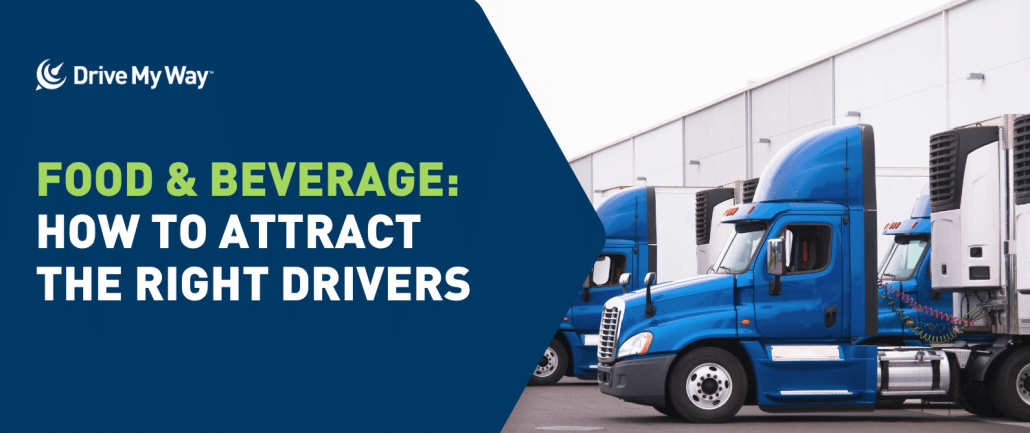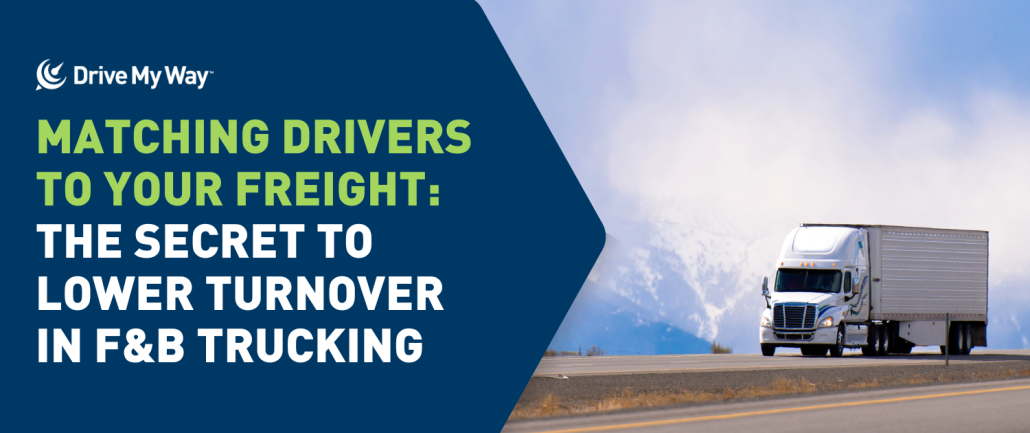
The food and beverage (F&B) trucking industry faces some of the most complex recruiting challenges in transportation.
Routes are often physically demanding, schedules can be unconventional, and specialized endorsements are sometimes required. With the addition of seasonal spikes and fierce competition from other driving jobs, it’s no wonder many fleets struggle to keep their recruiting pipeline strong.
The key to building a stable, high-performing fleet is attracting drivers who meet the qualifications and genuinely want the job. Keep reading to discover how carriers in the F&B sector can stand out and appeal to drivers who are the best fit for their freight.
Lead with Job Transparency
Many F&B carriers lose drivers before they have even started because the job was not presented clearly during the hiring process. Roles involving heavy touch freight, tight urban deliveries, or pre-dawn start times can be a shock for new hires if those realities were not spelled out upfront.
The solution is simple: advertise with full transparency. Postings should outline the type of freight, schedule expectations, and physical requirements. While this may shrink the applicant pool, it ensures that the candidates who do apply know exactly what they are signing up for, making them far more likely to stay.
Highlight the Value of Specialized Endorsements
Endorsements like hazmat, tanker, or reefer narrow the field of eligible candidates, but they can also be used as a recruiting advantage. Carriers that showcase opportunities for drivers with these credentials, whether through higher pay tiers, premium routes, or career advancement potential, position themselves as attractive destinations for skilled professionals.
For carriers looking to grow their applicant base, offering training support or reimbursement for endorsements can also serve as a powerful incentive. This approach can help you expand the candidate pool while also building loyalty by supporting long-term career growth.
Tailor Recruiting to Scheduling Preferences
Schedules in F&B trucking rarely resemble a regular nine-to-five. Deliveries may start as early as 3 a.m., run through weekends, or ramp up heavily during the holidays. Drivers who thrive in this environment exist, but they need to be found and targeted intentionally.
Recruiting messages should be honest about these schedules while also highlighting the stability and consistency that comes with them. Carriers that capture and segment applicants by schedule preference can direct their outreach to those most likely to embrace early mornings or irregular hours.
Market the Appeal of Local and Regional Routes
While long-haul drivers make up a large part of the industry, many candidates are looking for shorter routes with more home time. F&B trucking often fits this mold, offering local and regional deliveries with frequent returns home.
Carriers can make these route structures a centerpiece of their recruiting campaigns, especially when appealing to drivers who value family time or predictable daily routines. This differentiator can be as compelling as pay when presented effectively.
Elevate the Customer Service Role
In food and beverage, drivers are more than operators. They are ambassadors of your company’s culture and brand. Each stop involves interactions with grocery staff, restaurant managers, or warehouse teams. For drivers who enjoy relationship-building and being on the front lines of service, this can be a strong selling point.
Recruiting campaigns should emphasize the opportunity to represent trusted brands, interact with customers, and play a direct role in keeping shelves stocked. This framing attracts candidates with strong people skills who are more likely to excel in customer-facing roles.
Compete Creatively with Other Driving Jobs
Retail distribution and no-touch freight positions can often lead drivers away from F&B jobs. Competing head-to-head on “ease” is rarely effective. Instead, carriers can attract the right drivers by focusing on what makes F&B work distinct: consistency of freight, physical activity for those who prefer it, and the reliability of being part of an essential industry that is always in demand.
Promoting these qualities through targeted advertising, on job boards, social media, and even through driver referral programs, helps carriers reach drivers who value these aspects instead of those simply seeking the path of least resistance.
Stay Ahead of Seasonal Spikes
The beverage boom in summer and the holiday food rush put immense pressure on recruiting. Fleets that only scramble during peak demand often end up lowering standards or overextending existing drivers.
Building and maintaining a year-round talent pipeline is critical. Carriers that keep relationships warm with qualified drivers, even when they aren’t hiring, are better prepared to scale quickly when demand surges. Email campaigns, periodic check-ins, and referral incentives are effective tools for keeping this pipeline active.
Attracting the right drivers in food and beverage trucking requires a deliberate focus on candidates suited to the work, the schedule, and the customer interactions that come with the role.
For more ways to stay ahead of the curve in the transportation industry in 2025, be sure to check out the rest of our Employer Blog posts and connect with us on social media.



